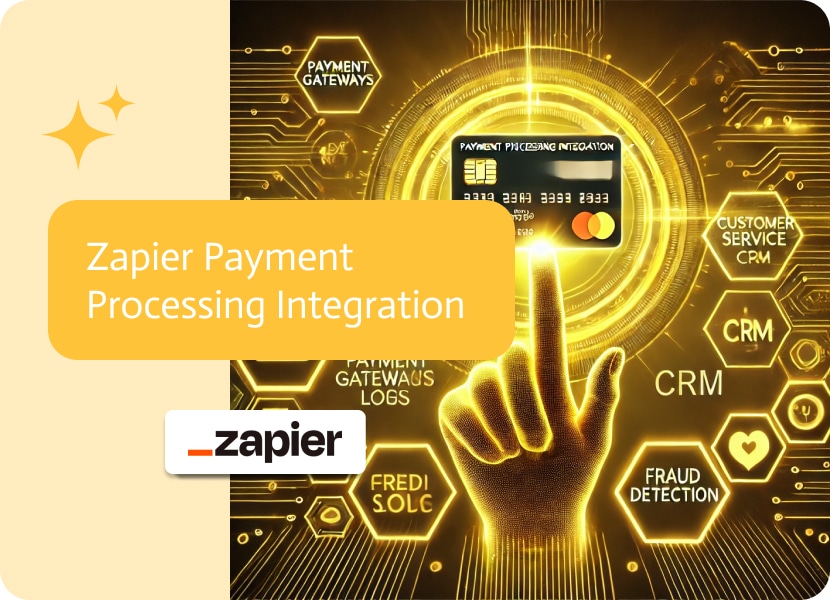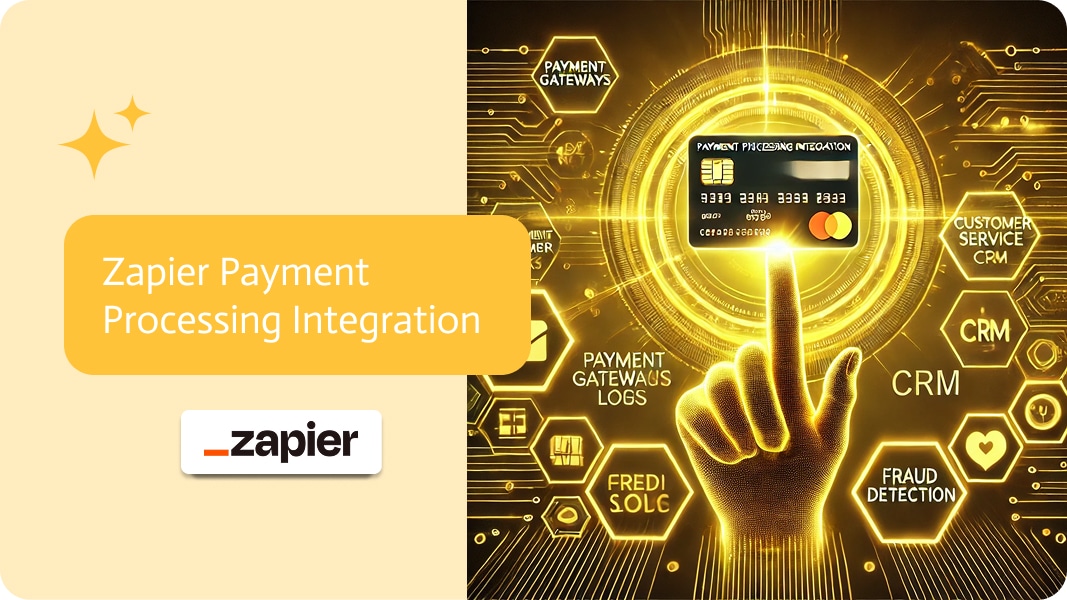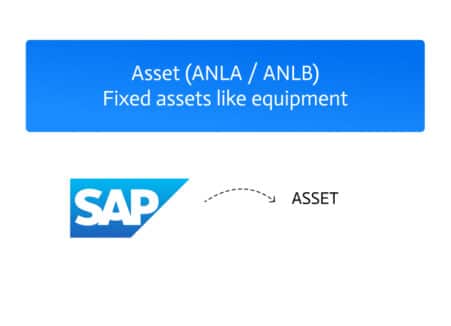

Zapier Payment Processing Integration
In today’s digital economy, efficient payment processing is crucial for businesses to maintain cash flow and customer satisfaction. Integrating payment processing systems with other business applications can revolutionize how companies handle transactions, enhance accuracy, save time, and boost overall productivity. This article explores the transformative impact of payment processing systems integration and how Zapier can facilitate seamless connections.
What is Payment Processing Systems Integration?
Payment Processing Systems Integration involves connecting a business’s financial systems to payment gateways or processors, enabling seamless electronic transactions such as credit card and digital wallet payments. By automating these connections, businesses can eliminate manual data entry, reduce errors, and ensure up-to-date information across platforms.
Zapier’s Role in Payment Processing Systems Integration
Zapier, a popular web-based automation tool, is crucial for payment processing systems integration. It bridges different applications, facilitating data sharing without complex coding or IT intervention. Businesses can create “Zaps” — automated workflows that trigger actions in one app based on events in another. This makes Zapier an ideal solution for small to medium-sized businesses seeking to streamline payment processing without expensive custom-built integrations.
Top Use Cases for Payment Processing Systems Integration
1. E-commerce Transactions
Automating payment processing for online stores ensures fast and accurate transactions, improving customer experience and reducing manual workload.
Example: An online fashion retailer integrates its e-commerce platform with payment processors via Zapier. When a customer completes a purchase, the payment is automatically processed, and the order details are updated in the retailer’s inventory and accounting systems.
2. Subscription Billing
Syncing subscription billing data across platforms ensures accurate billing cycles and timely payments, reducing the risk of errors and missed payments.
Example: A software-as-a-service (SaaS) company uses Zapier to integrate its subscription management platform with its payment gateway. When a customer subscribes or renews their subscription, the billing information is automatically synced, ensuring accurate and timely charges.
3. Invoice Management
Automating invoice creation and tracking streamlines the billing process, reduces manual errors, and ensures timely payments.
Example: A digital marketing agency integrates its invoicing software with payment processors using Zapier. When a project milestone is reached, an invoice is automatically generated and sent to the client, and payment status updates are tracked in real-time.
4. Fraud Detection
Integrating fraud detection tools with payment processors helps identify and prevent fraudulent transactions, protecting the business and its customers.
Example: An online electronics store uses Zapier to connect its payment gateway with a fraud detection service. When a transaction occurs, the fraud detection tool analyzes it in real-time, flagging suspicious activities and alerting the store for further investigation.
5. Financial Reporting
Generating financial reports from payment data provides insights into cash flow and financial health, aiding in strategic decision-making.
Example: A consulting firm integrates its accounting software with payment processors via Zapier. Payment data is automatically compiled into financial reports, providing real-time insights into revenue, expenses, and profitability.
6. Customer Notifications
Automating customer notifications for payment statuses improves communication and enhances customer satisfaction by keeping them informed.
Example: A subscription box service uses Zapier to integrate its payment processor with its email marketing platform. When a payment is processed, customers receive automated notifications about their payment status, subscription details, and shipping updates.
Advanced Integration Solutions for Different Business Sizes
While Zapier is excellent for small to medium-sized businesses, larger enterprises often need more robust solutions to handle complex needs. Here’s a look at various platforms catering to different business requirements:
1. Noca AI
This platform provides a no-code integration solution leveraging AI for intelligent automation and data handling. Noca AI is designed for both enterprise customers and small to medium-sized businesses (SMBs). It offers robust security features, compliance capabilities, and is relatively affordable compared to other enterprise-level solutions.
2. Boomi
Known for its comprehensive tools for API management and data synchronization, Boomi is particularly suitable for large-scale payment environments needing to integrate multiple complex systems. While highly effective, it can be expensive and may be more complex than necessary for smaller businesses.
3. MuleSoft
MuleSoft excels in regulatory compliance and complex integrations. Its robust API management and data integration capabilities make it ideal for enterprises with intricate payment ecosystems. However, MuleSoft’s complexity and cost may be prohibitive for SMBs.
4. Workato
Workato combines powerful integration and automation with user-friendly interfaces. It supports intricate workflows and offers extensive tools for managing integrations efficiently. Workato is a good fit for organizations with complex payment processes, but it comes with a high price tag and may be overkill for smaller companies.
5. SnapLogic
SnapLogic facilitates fast data movement and business agility. Its emphasis on intelligent data integration and flexibility makes it attractive for companies undergoing rapid change or growth. SnapLogic is more suited for large enterprises due to its cost and complexity.
6. Make (formerly Integromat)
This platform supports workflows with a visual interface for creating automations. Make is a good option mainly for small businesses and non-profits due to its user-friendly design and affordability. It offers extensive automation and flexible integration features, making it an excellent choice for those with limited budgets and technical resources.
Conclusion
Payment processing systems integration is essential in modern business, enhancing financial operations by connecting systems and automating processes. Whether through user-friendly tools like Zapier or one of the above Zapier Alternatives for enterprise solutions, integrating payment processing systems improves efficiency, accuracy, and responsiveness. As technology evolves, more sophisticated integration capabilities will continue to transform payment management, making it a necessity for organizations aiming to stay competitive and efficient.


